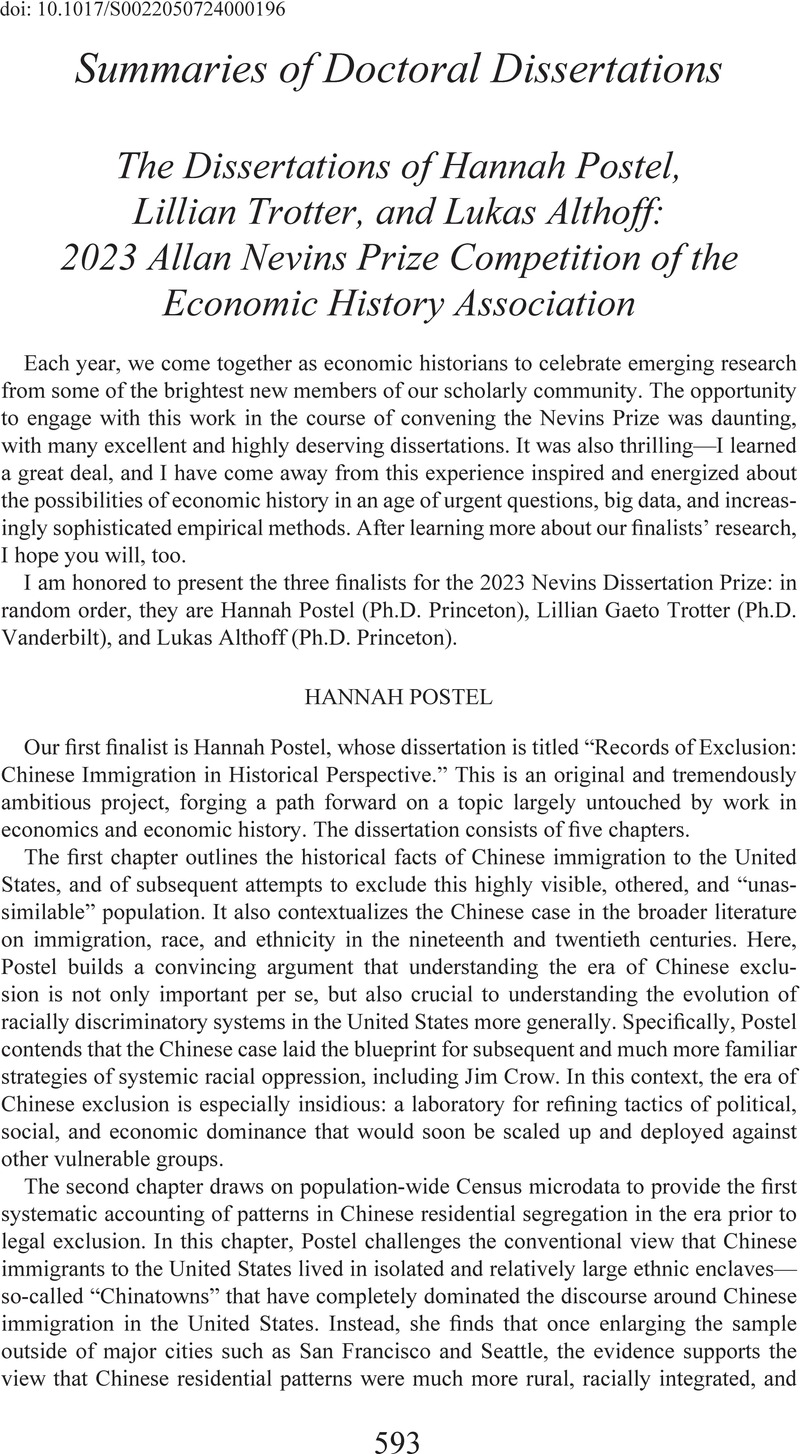No CrossRef data available.
Published online by Cambridge University Press: 21 May 2024

1 Other applications can be found in Craig, Eriksson, and Niemesh (2019) and Dribe, Eriksson, and Scalone (2019).
2 For an overview from an economic history perspective, see Esteves and Mesevage (2019).
3 We use the Hull Domesday Project data (Palmer 2010).
4 For a discussion, see De Pleijt, Nuvolari, and Weisdorf (2020).
5 These concerns are not new; an early and notable example can be found in Feinstein (1988), whose criticism of Williamson (1985) illustrates the difficulties in constructing reliable and representative occupational pay ratios.
6 Our core analysis pertains to male workers only, but we also illustrate that our findings are robust to the inclusion of child and female workers, thanks to the rich coverage of female labor in the industrial census of 1896 (Buyst and Delabastita 2023).
7 In an updated version of this chapter, we present a counterfactual estimate of employment and wages under different levels of collusion (Delabastita and Rubens 2023).
8 Also, see https://www.historicalmanufacturingcensus.se/.
9 Technological leadership in invention is commonly defined as having the highest rate of invention. Another concept, economic or industrial leadership, is commonly defined as having the highest total factor productivity.
10 City growth is widely used as a proxy for local technological progress when more direct measures are absent.
To send this article to your Kindle, first ensure no-reply@cambridge.org is added to your Approved Personal Document E-mail List under your Personal Document Settings on the Manage Your Content and Devices page of your Amazon account. Then enter the ‘name’ part of your Kindle email address below. Find out more about sending to your Kindle. Find out more about saving to your Kindle.
Note you can select to save to either the @free.kindle.com or @kindle.com variations. ‘@free.kindle.com’ emails are free but can only be saved to your device when it is connected to wi-fi. ‘@kindle.com’ emails can be delivered even when you are not connected to wi-fi, but note that service fees apply.
Find out more about the Kindle Personal Document Service.
To save this article to your Dropbox account, please select one or more formats and confirm that you agree to abide by our usage policies. If this is the first time you used this feature, you will be asked to authorise Cambridge Core to connect with your Dropbox account. Find out more about saving content to Dropbox.
To save this article to your Google Drive account, please select one or more formats and confirm that you agree to abide by our usage policies. If this is the first time you used this feature, you will be asked to authorise Cambridge Core to connect with your Google Drive account. Find out more about saving content to Google Drive.